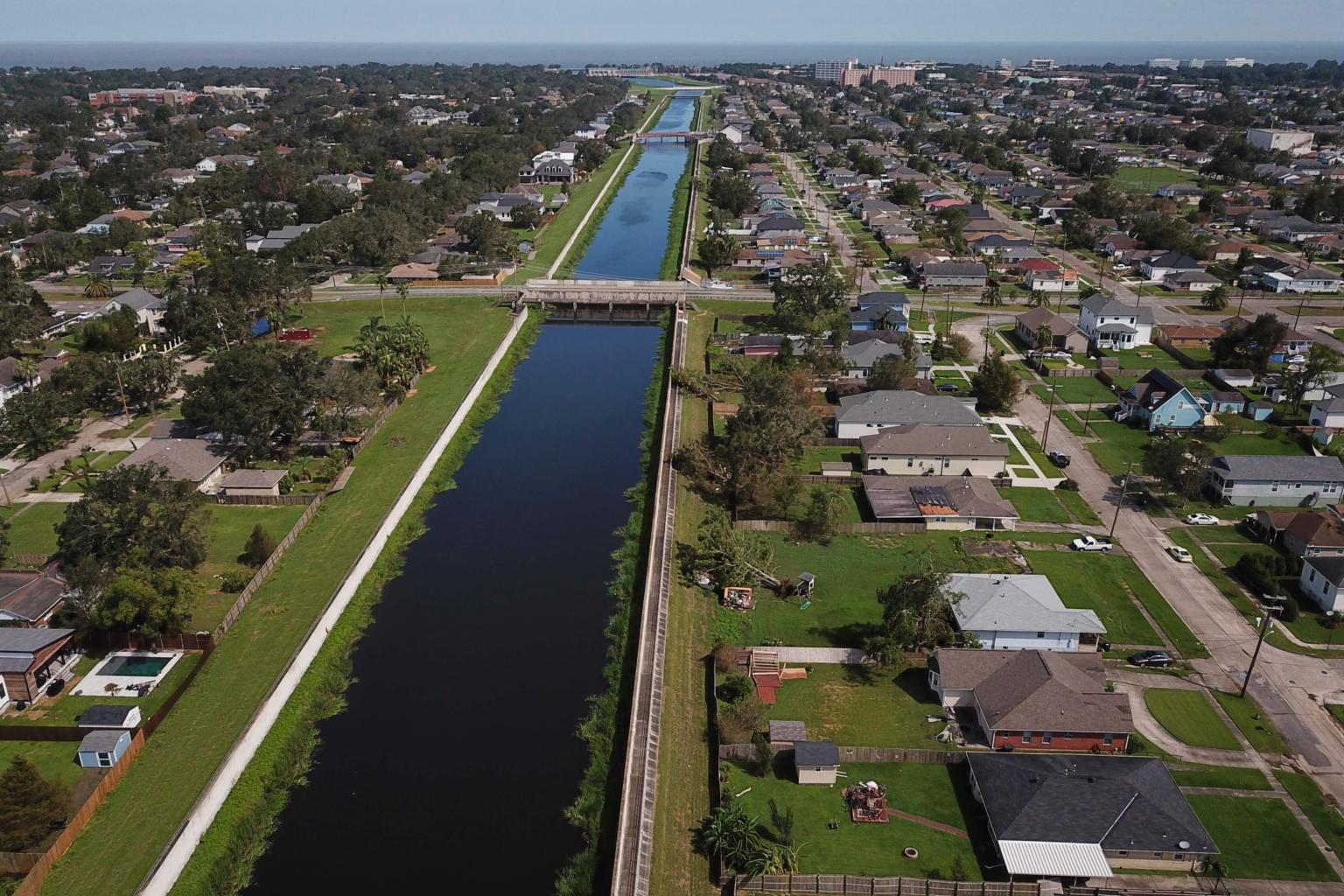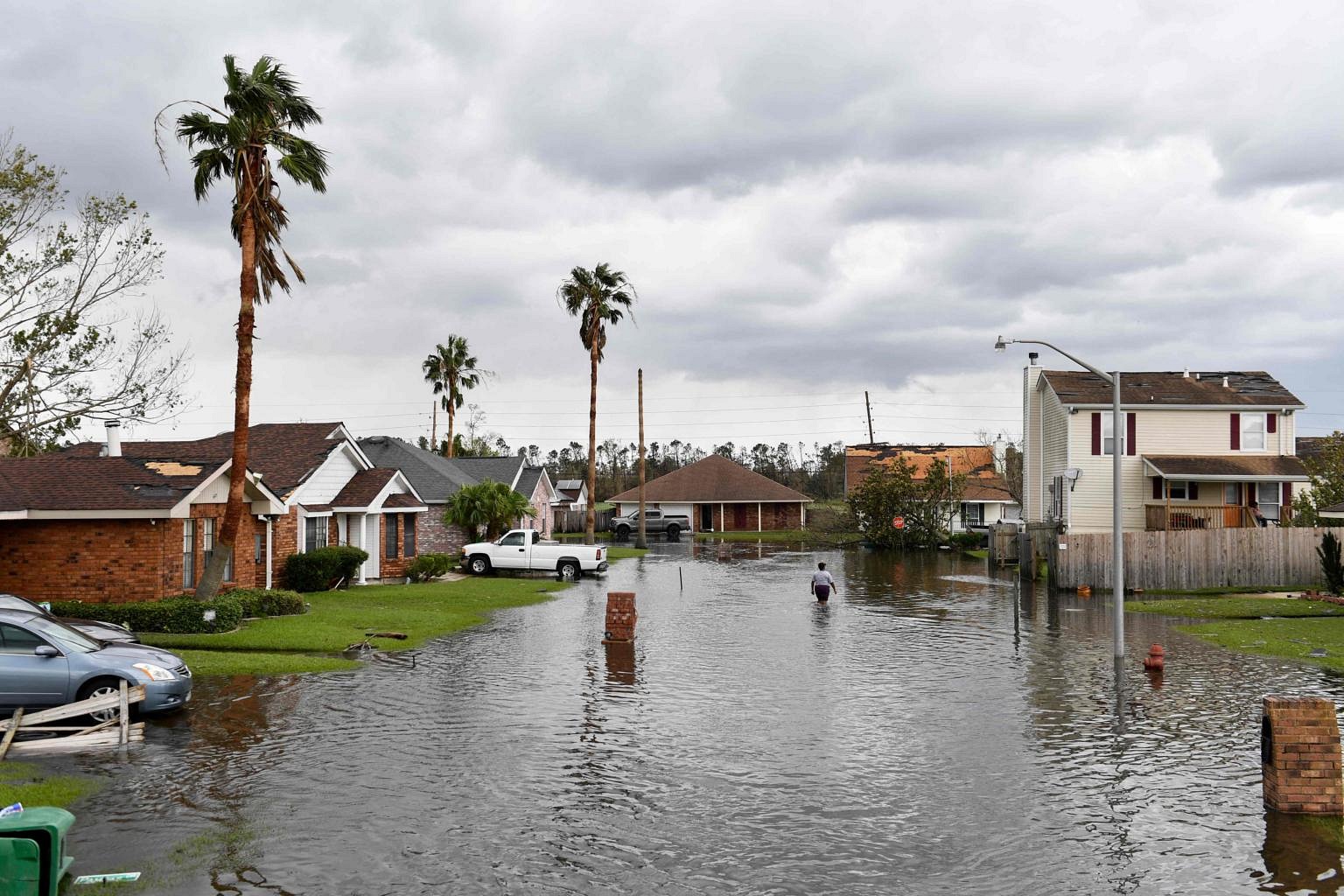New Orleans flood defences hold, 16 years after Katrina failure
Sign up now: Get ST's newsletters delivered to your inbox

An aerial image shows the London Avenue Canal in the aftermath of Hurricane Ida in the Gentilly neighborhood of New Orleans, Louisiana, on Aug 31, 2021.
PHOTO: AFP
Follow topic:
NEW ORLEANS (AFP) - New Orleans, still scarred by the devastation wrought 16 years ago by Hurricane Katrina, held its breath as Ida bore down this week. But this time, the city's flood defences prevailed.
In the wake of the 2005 storm that killed more than 1,800 people and submerged whole swathes of New Orleans, the United States government spent US$14.5 billion (S$19.5 billion) on levees, pumps and other protections for the city and nearby suburbs.
"Ida came onshore with everything that was advertised: the surge, the rain, the wind," Louisiana governor John Bel Edwards told a briefing on Monday (Aug 30).
"The good news, first, is all of our levee systems... performed magnificently," he added.
Located at the mouth of the Mississippi River and in an area below sea level, New Orleans is surrounded by water, with the giant, briny Lake Pontchartrain to the north and the Gulf of Mexico to the south.
Given the city's geography, as well as Ida's lashing 240kmh winds, storm surge and heavy rains, the danger to New Orleans' 390,000 people was very real. But no levee in the city was breached or overtopped. Mr Edwards said that feat could be traced to 16 years ago.
Under the battering from Katrina's floodwaters, more than 50 levees broke and 80 per cent of the city was submerged, with water reaching 6m in places. Billions of dollars in damage was done.
The storm and the failed response that followed unleashed suffering that was captured in images of desperate people stranded on the roofs of their flooded homes in sweltering heat, violent looting and fetid evacuation sites.
The authorities from then President George W. Bush faced ferocious criticism, and since then, New Orleans' flood-protections have been rebuilt and improved.
The system "performed as it was designed, that is, to keep water out of the city," said Ms Rene Poche, spokesman for the Army Corps of Engineers in New Orleans, which was responsible for designing and building the levee system.
After Katrina, a 209km ring of barriers was built to withstand a storm surge of up to 9m. Huge gates now allow water to drain away to Lake Ponchartrain or the Gulf of Mexico, while preventing water from entering the city, said Ms Poche.
The protection system also includes more than 70 pumps, which drain water in the event of street flooding. "After Katrina... it was important that the system was structurally superior - higher levees, higher wall and resilient," he added.
The levees in Louisiana's largest city had already passed an initial test during Hurricane Isaac in August 2012, which caused little damage.
But some neighboring cities were not so lucky this week, as Ida roared ashore as a ferocious Category 4 storm.

In LaPlace, west of New Orleans, roads and homes were submerged under Ida's floodwaters. Ida has since lost strength and is now continuing northeastward as a tropical depression.
"Hurricane Ida's lesson, therefore, is not that Louisiana's storm protections are good enough. Its lesson is that investments in infrastructure save lives," historian Andy Horowitz wrote in a guest essay in The New York Times.
"Demand that Congress take meaningful action, because Louisiana is not unique, and you may be next," he tweeted on Tuesday.

